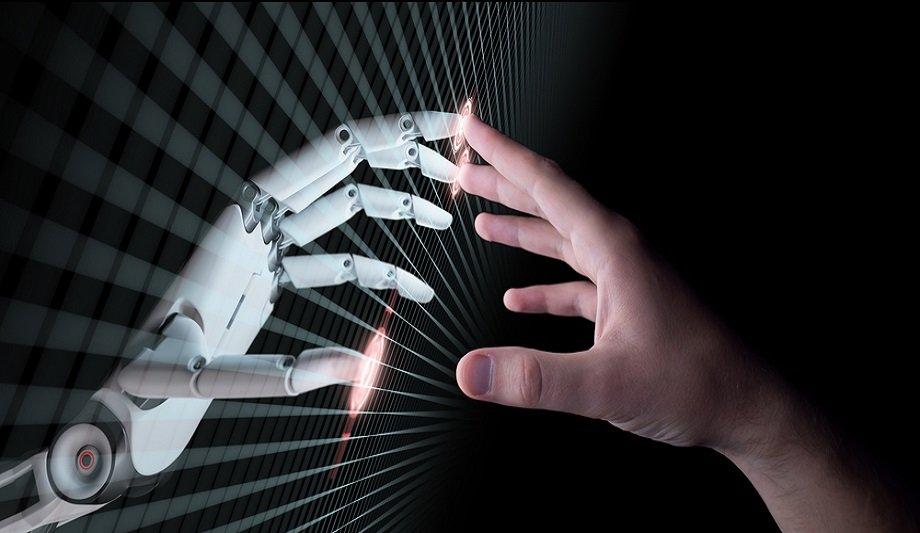How is AI changing the course of the security marketplace?
Editor Introduction
According to a report by the U.S. Government Accountability Office (GAO), artificial intelligence (AI) is expected to transform all sectors of society, including national security. The physical security marketplace is certainly feeling the impact of the new technology, which has quickly gained prominence as one of the industry’s most popular buzzwords. To assess the more practical aspects of the situation, we asked this week’s Expert Panel Roundtable: How is artificial intelligence (AI) changing the course of the security marketplace?
People may not realize it, but AI has been used extensively in the security industry for years. That said, we have seen an explosion of mainstream interest following the emergence of generative AI. Expectations are high for the impact AI may have, but in the security marketplace, it’s important to remain both realistic and pragmatic. What we might see with generative AI is increased accuracy of reporting and analysis. For example, metadata generated from today’s surveillance cameras might be uploaded into a program capable of writing a report detailing what the camera saw during a specific incident. That’s just one application, but it is indicative of generative AI’s potential. Still, it’s important to avoid getting carried away, generative AI has significant potential, but it isn’t magic. As leaders in the space, we have a responsibility to invest in innovation, but also to ensure the technology is being used and discussed appropriately.
AI is revolutionising the video monitoring market, transforming it into a more efficient, effective, and affordable market segment. AI-powered video analytics can analyse vast amounts of video data in real time, detecting and classifying objects, tracking movements, and identifying anomalies, among other capabilities. This automation makes it possible to monitor large areas and multiple cameras simultaneously. AI is being used in proactive video monitoring to detect potential security threats and prevent incidents before they occur. With proactive video monitoring services, AI-powered video analytics continuously analyze video data to proactively detect suspicious behavior, such as loitering, unattended bags, and other anomalies, before damage or loss can occur. AI can also identify patterns and trends in behavior. For example, suppose an individual is loitering in a specific area for an extended period. In that case, AI can trigger an alert to operators within the monitoring centre so they can investigate and take appropriate action.
At its best, AI is a powerful tool for improving the security posture, enabling organisations to detect and respond to security threats more quickly and effectively, while also helping to prevent potential breaches before they occur. However, few companies are truly leveraging the technology to navigate improvements in their physical security programs. Machine learning (ML), on the other hand, is a subset of AI that uses algorithms to recognise patterns from data and automatically learn insights, allowing programmes to become more intelligent over time. The great part is, the more data the computer or programme is exposed to, the more accurate the predictions become. ML ultimately should aim to remove the need for humans to do repetitive, low-value decision-making activities. In physical security, this may look like training software to triage false positives or system/device health ticketing. Data might come from video surveillance cameras, access control points, alarms, etc. This can help reduce noise, detect anomalies, and provide predictive maintenance and analysis, freeing time for security operators to tackle other strategic initiatives, creating lower turnover rates, and saving long-term resources.
Artificial intelligence is making it possible for physical security teams to do more with less, which is critical in today’s macroeconomic environment. AI serves as a force multiplier, automating repetitive security monitoring tasks and bringing real incidents to operators' attention. This reduces the probability of security teams missing vulnerabilities and incidents and allows them to respond faster. Some of the things AI can help monitor include access control alarms, video, door hardware and camera health, tailgating, and anomalous cardholder behaviour. AI can also generate actionable insights such as operator performance and building utilisation, helping security teams improve operations and share meaningful data with other parts of the organisation giving security a seat at the table. Finally, AI can augment or replace on-site guards with remote guarding. This proactive approach consists of automated video monitoring and integrated audio communication to deter intruders, enhancing security and cost savings.
AI is really catching the headlines at the moment and for good reason, in my opinion we are just scratching the surface of what it can offer, which is of course true when it comes to applications (or potential applications) within the security market. AI is perfect for improving productivity within any business or organisation, taking the strain on repetitive or easily mishandled tasks to save time and improve accuracy. We are already seeing ChatGPT being used to generate ideas for marketing content, but equally, it has significant potential for checking product/software coding for bugs/debugging. There are also opportunities for it to be used for automating other processes such as Tech Support (certainly for FAQ-type queries) and writing specification outlines. A big opportunity for AI is using it to mine different data silos to identify relationships in hitherto disparate data sources and use these to generate behaviour analysis and predictions which is an excellent way of bolstering security incident detection and analysis.
Artificial Intelligence (AI) is reshaping the security marketplace in remarkable ways. Conversational AI, often overlooked, simplifies human-machine interaction, delivering seamless customer experiences. It relieves call centre staff by handling routine inquiries, allowing them to focus on critical issues. Additionally, it enhances access control systems by providing real-time digital assistance to visitors, streamlining procedures, and improving security. Embracing Conversational AI unlocks immense potential for innovation in the security industry, enabling organisations to optimise resource allocation, improve operational efficiency, and stay one step ahead of evolving threats. By leveraging the power of AI-driven conversations, security professionals can enhance both customer satisfaction and overall safety.
In the United Kingdom, many companies are struggling to hire security personnel for a number of reasons cited, such as Brexit, COVID-19, low pay, and low job satisfaction. We believe AI has an important role in making security easier, by automating regular tasks (locking doors, performing patrols) and detecting threats in real-time. The built-in AI analytics in Vicon’s cameras can filter out non-relevant video footage, reducing storage requirements and diminishing nuisance alarms. Instead of notifying operators about irrelevant activity, an AI system can filter out shadows moving, trees blowing, or a carrier bag flying by, and focus on what matters. This can help security personnel quickly identify and react to real threats, making it easier to juggle the many demands of the modern security officer effectively. Overall, we see AI as a valuable tool for security personnel, enabling them to spend less time doing admin and more time making things secure.
AI is dramatically improving the value and cost-effectiveness of video monitoring, encouraging the broad adoption of surveillance technology and additional camera installations. Deep-learning AI filters out and reduces false positives over time, significantly reducing the labor to monitor intrusion while turning video systems into intelligent deterrence solutions. Proper application of deep-learning AI has proven to successfully automate immediate deterrence of unwanted intrusions with 98+% effectiveness and focus operators on real threats and safety concerns that require intervention and possible public safety dispatch. AI improves the efficiency of human labor required to monitor video, providing a faster, targeted reaction to intrusion, and driving down monitoring costs. AI technology is also being trained to characterise successful, automated deterrence, freeing monitoring personnel to focus on pertinent threats. Proper application of AI will continue to offer property owners a substantial reduction in monitoring labour costs and thus broader adoption of monitored security systems.
AI can be used to detect and prevent cyber-attacks, identify, and track potential threats, and analyze significant amounts of data. AI can also automate routine tasks such as monitoring security cameras and detecting suspicious behaviour. AI can help security professionals make better decisions by providing them with real-time data and insights. RealNetworks is now a leader in AI. Its Kontxt division uses mission-critical NLP (Natural Language Processing) to secure the nation's mobile network messaging channels from spam and malicious attacks. The SAFR (Secure Accurate Facial Recognition) division employs face biometric AI in a family of access control products your face is your badge. AI-powered automation of security operations will eventually deliver numerous benefits but not without substantial challenges. The benefits include enhanced detection, protection, and coverage against malicious actors; lower cost; and better user experience. Challenges have concerns about privacy, bias, and transparency; and a fractured regulatory landscape representing liability and uncertainty for vendors.
There is no doubt that AI is revolutionising the security landscape. Just as the fusion of AI capabilities with the abundance of data on the internet has revolutionized our ability to produce human-like textual responses and thus given rise to ChatGPT, the same breakthrough sets the stage for the fusion of AI and video in data-driven video technology. Security systems’ effectiveness, efficiency, and overall performance will be significantly enhanced, and key areas that will be impacted include advanced video analytics, anomaly detection, facial recognition, adaptive AI, cybersecurity, and numerous possibilities using computer vision. For instance, AI-enabled video analytics can rapidly process massive data volumes, empowering security teams to swiftly detect and respond to potential threats. Additionally, by utilising machine learning algorithms, security systems can identify and flag unusual or suspicious behaviours like loitering or unauthorised access. Furthermore, state-of-the-art adaptive AI continually learns and adapts to emerging threats, progressively augmenting security systems' intelligence and effectiveness. However, AI deployment in the security marketplace also raises privacy, data protection, and ethical concerns. It is crucial to develop and implement AI technologies within robust regulatory and ethical structures that safeguard fundamental rights and encourage responsible development and usage.
Artificial intelligence (AI) is revolutionising the security marketplace in various ways. One of the significant impacts of AI is its ability to analyse vast amounts of data and provide real-time insights that can enhance security decision-making. AI-enabled security systems can also learn from data patterns, detect anomalies, and predict potential security threats, making them more proactive and effective in identifying and mitigating risks. AI-powered security solutions are also improving accuracy and reducing false positives, which can be a significant challenge for human operators. For instance, facial recognition technology can accurately identify individuals in real time and match them to known security threats. Additionally, security systems can automate the response to critical scenarios defined by the user, such as starting a lock-down of a building based on audio classification or weapon detection, or a combination of AI criteria.
AI impacts security in many ways. First, it is helping adversaries do a better job of getting through organisations’ defenses: whether by creating new malware, writing craftier phishing emails, making deep fake impersonations, or using large language models like ChatGPT to discover previously unknown vulnerabilities in code. On top of that, AI itself is an increasingly lucrative target. There’s a lot of money to be made in stealing the algorithms and intellectual property behind those large language models. Fortunately, AI can be used to defend organisations as well. When you’re looking for a needle in a stack of other needles, AI can help detect anomalies much faster. Perhaps more significantly, however, is AI’s ability to help overcome the skills gaps facing the security industry. AI-powered tools can elevate a lower-skilled security operations centre (SOC) resource nearly up to the level of a more experienced worker meaning we can quickly bring more people into the industry.
Artificial intelligence, or at least its machine and deep learning subsets, has become ubiquitous. We’re used to asking for information from Alexa, Google, Siri, and ChatGPT. For the security industry, the good news is that the more AI is in the news, the more familiar integrators and end-users are becoming with the technology. Deep learning has enabled security teams to do a better job with the limited resources they have. Employing a surveillance camera with object recognition means that new and unique forensic searches can be accomplished in a tiny fraction of the time it would take a team of people to conduct manually. Likewise, because searches can be saved, we can be on the lookout for known vehicles or persons of interest. AI is enabling organisations to evolve to a more proactive security stance for potential threats while also gathering valuable insights on operations and even customer behaviour.
AI, or at least its subsets such as Machine Learning and Deep Learning, is already making a significant impact on the physical security industry by enabling more sophisticated and efficient security solutions that help operators make more informed decisions. AI can automate routine, repetitive, or time-consuming security tasks such as “watching’ hundreds of hours of recorded video in a matter of minutes. This frees up security personnel to focus on more critical tasks and can help improve response times in emergency situations. By analysing the data provided by physical security devices, advanced algorithms can detect events that are out of the ordinary and flag exceptions so that operators can decide on a course of action and quickly respond to threats or incidents. AI algorithms can also correlate data from multiple systems such as security cameras, access control systems, and other sensors, to identify patterns and enable security personnel to be proactive in addressing potential risks and vulnerabilities.
The alarm monitoring market is experiencing significant transformation due to the integration of AI technology. With improved speed and accuracy of security alarm responses, AI enhances customer satisfaction and reduces false alarms. One way AI is impacting the alarm monitoring market is through video analytics. This technology is seamlessly integrated with security cameras to detect unusual or suspicious activity, thereby enabling operators to respond swiftly and accurately. This results in a decrease in false alarms and greater efficiency in the monitoring process. Another key application of AI is proactive video monitoring (PVM) services. By utilizing AI, operators can analyse security camera footage in real-time, quickly identifying suspicious behaviour or activities like loitering in restricted areas or driving in the wrong direction. PVM can alert operators in the monitoring centre, who can then voice down to the perpetrators to let them know they are being monitored. This can help prevent security breaches before they occur and provide an extra layer of security.
Editor Summary
Artificial intelligence (AI) is already proving its worth in the physical security industry by analysing vast amounts of video data in real-time. More broadly, the technology can detect and respond to security threats more quickly and effectively, mine information across multiple data silos, and reduce false alarms over time. In a time of labor shortages, AI can remove the need for humans to do repetitive, low-value decision-making activities and serve as a force multiplier to make security systems and personnel more effective than ever.
- Related links
- Axis Communications CCTV software
- Axis Communications Access control software
- Genetec Access control software
- Genetec CCTV software
- IQeye Access control software
- IQeye CCTV software
- Milestone CCTV software
- Salient Systems CCTV software
- TDSi Access control software
- TDSi CCTV software
- Vicon Access control software
- Vicon CCTV software
- Axis Communications Access control readers
- TDSi Access control readers
- Vicon Access control readers
- TDSi Access control cards/ tags/ fobs
- Vicon Access control cards/ tags/ fobs
- Axis Communications Video signal devices & accessories
- 2023 security trends























